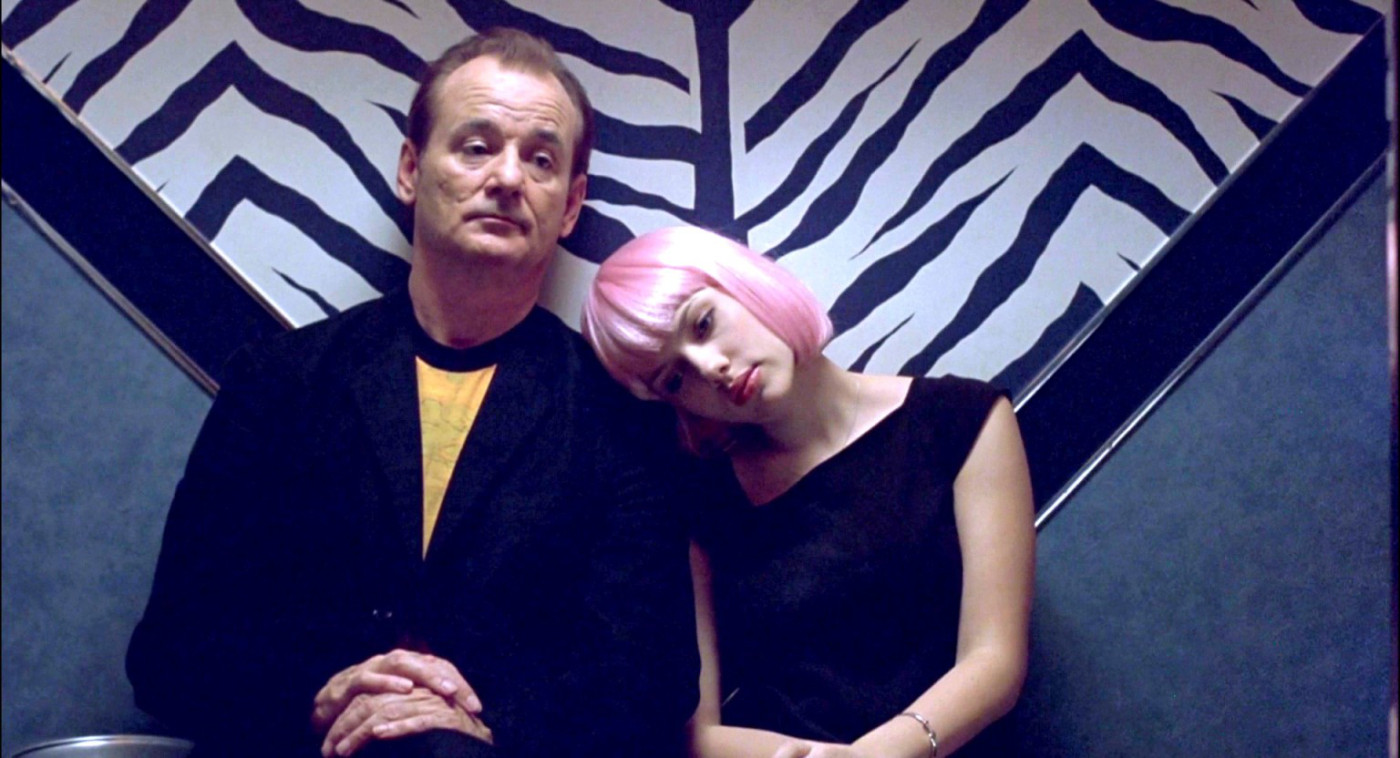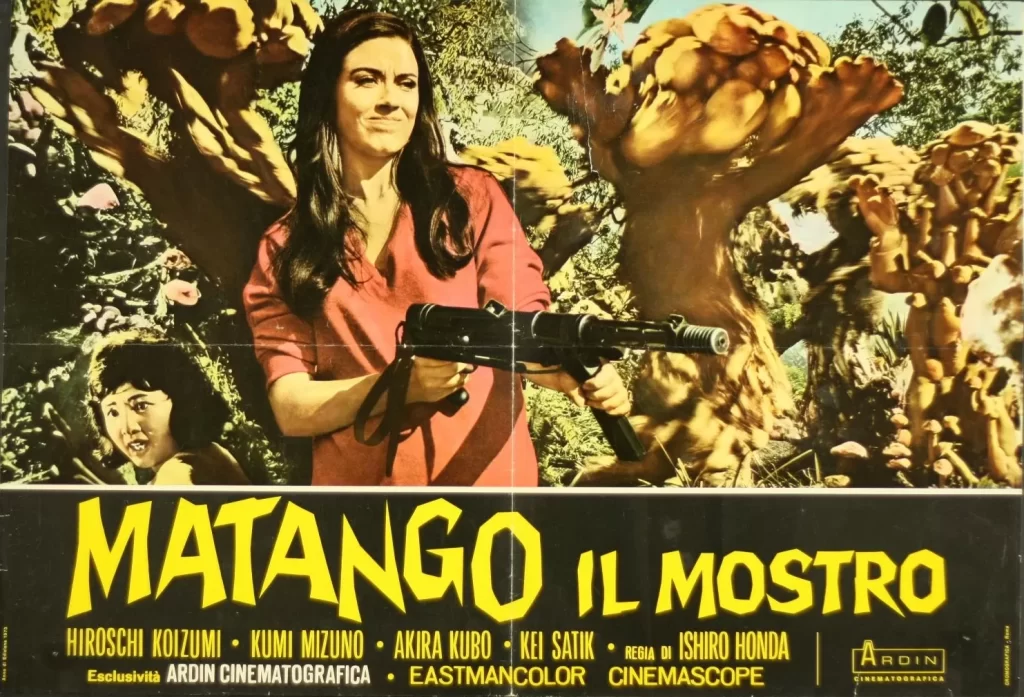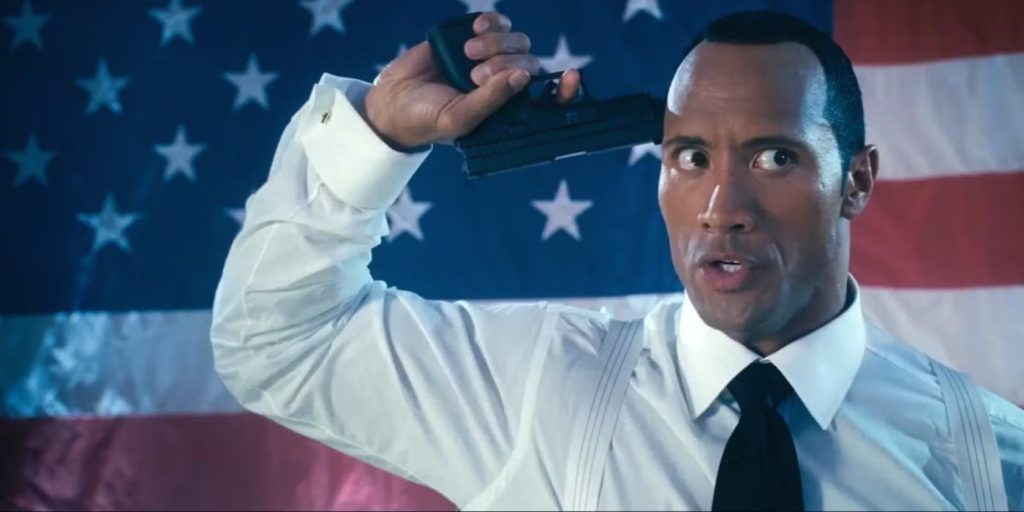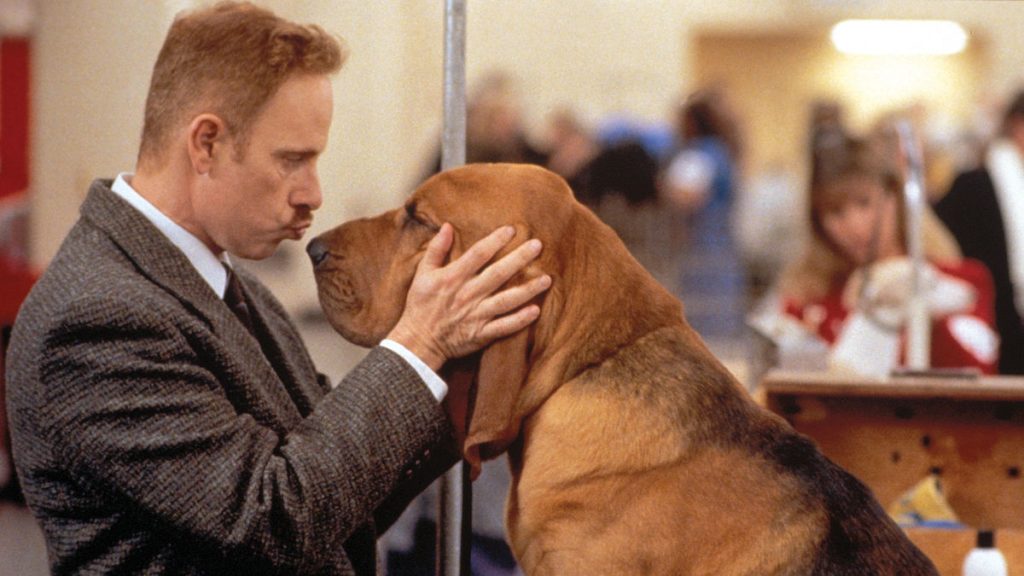Where were you at seventeen? Maybe you were living in a small midwestern town with only one multiplex. Maybe you were already dreaming of next year when you’d be a college freshman, hopefully at a school far away from a place that had begun to seem small. Maybe you read about Lost in Translation in one of your movie magazines, which still existed back then, and were surprised when it came to your theater. Maybe you were a little shocked to learn that the actress on screen, with her beestung lips and husky voice, introduced with a lingering shot of her rear end in sheer pink underwear, was the same age as you when she was offered the part.
Released twenty years ago this month, Lost in Translation now feels like both the start of many things and a capsule of its time. It was the beginning of Scarlett Johansson’s ascension to stardom; now the Marvel player is mostly acting against green screens. It was the apex of the more serious stage of Bill Murray’s career, for which he received his first, and only, Oscar nomination. And it was one of the first major hits for fledgling production company Focus Features, earning $118 million at the box office on a $4 million budget. Such a word-of-mouth success was a rarity back then; it feels almost unheard of now.
The film is also, as the kids say these days, “a vibe.” After the opening credits, we see Bob (Murray), a washed-up actor in Tokyo to film a whiskey commercial, waking up in a cab driving through downtown. It’s nighttime but the neon lights of the buildings and flashing advertisements illuminate the city like day, and this dreamlike state is heightened when Bob sees his own face on a passing billboard. He’s greeted like a star but we’ll soon learn that he’s desperately lonely, increasingly at odds with his passive-aggressive wife back home, and isolated in a place where he doesn’t know the language.
Charlotte (Johansson) is feeling adrift, too. She’s in Tokyo with her new(ish) husband John (played with stuttery self-regard by Giovanni Ribisi) who is constantly on his way out the door to work on a shoot. A recent Yale graduate, she is struggling to figure out what she wants to do with her life, reacting to those who seem to have a better grasp of themselves with a knee-jerk disdain. She and Bob, both unable to sleep, will soon cross paths in the hotel bar with its panoramic glass windows and the same cheesy band playing every night. Despite their age difference, a connection will form.
Where were you at twenty-seven? If you’re Sofia Coppola, you were directing your first feature, The Virgin Suicides. It was during the press tour for that film that she began conceiving the plot for Lost in Translation during a stay at the Tokyo Park Hyatt. She’d had many experiences in the city before, traveling there often after she dropped out of college and was trying on different careers and suffering what she called a “kind of crisis,” traits she shares with her protagonist Charlotte. She latched onto the idea of two characters experiencing a “romantic melancholy” and the story blossomed from there.
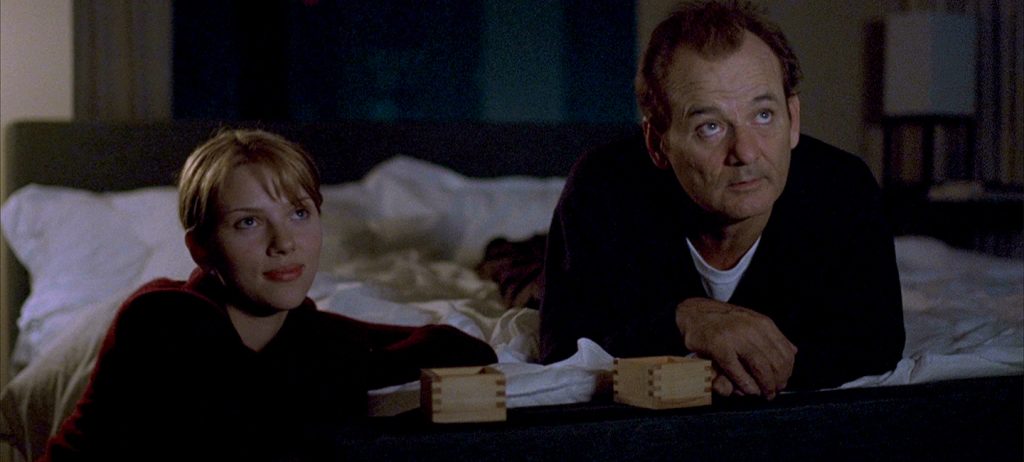
With hindsight, it’s clear just how much of her personal life Coppola was investing in her second film. The tensions in Charlotte’s relationship with John have direct parallels with Coppola’s own marriage at the time to fellow director Spike Jonze. And Anna Faris is rumored to have based her performance as a ditzy bottle-blonde film star on Cameron Diaz, who starred in Jonze’s debut Being John Malkovich four years prior. All filmmakers adapt from their own experiences, but Coppola worried that her script was too “indulgent,” despite only running seventy-five pages. Were she just starting out her career now, she’d likely be dogged by complaints of nepotism, but maybe critics at the time were just relieved she wasn’t in front of the camera again.
It must be said that the film has aged poorly in some ways, particularly the comedic intent of the interactions Bob has with his Japanese hosts and colleagues. Contemporary audiences will rightly cringe at the jokes about mispronunciations and the hyperactivity of the culture. Coppola’s camera often films Tokyo at a remove from her characters; it has a sweeping beauty but it’s also overwhelming. A generous interpretation would say that it’s all in service of the film’s main theme of alienation taken to an extreme. Regardless, it can make Lost in Translation an uncomfortable sit.
Then again, maybe it was always meant to be. All of Coppola’s films are about privilege to some extent, whether that of a group of neighborhood boys obsessed with the untouchable girls across the street, or a Civil War-era soldier, or literal royalty. The bond that Bob and Charlotte form during their hazy week together is a privilege, too, albeit an emotional rather than a material one. But they are both technically attached to others. Murray and Johansson have a surprisingly authentic chemistry; their sardonic rapport builds to a gentle intimacy that dances around consummation but never succumbs to it. They know their time with one another is short. Viewers see but don’t hear their goodbye as Bob embraces Charlotte on the street and whispers in her ear (Murray, ever the prankster, apparently delivered something different in each take.) It’s a graceful ending for Coppola to grant her characters. The words don’t matter; it’s having the chance to say them.
Where are you at thirty-seven? Life hasn’t quite turned out the way you assumed it would when you were younger. You haven’t figured everything out yet, and you’re creeping closer in age to Bob than Charlotte. But you know it’s possible to feel just as alone in a crowded room as a bed with the wrong person in it. You know love is a package that might not look like what you expected; sometimes it’s a package that comes late, or not at all. You have a Pavlovian nostalgic response to the opening drum kick of “Just Like Honey.” And you know some things are the same in any language.
“Lost in Translation” is streaming on Netflix.
